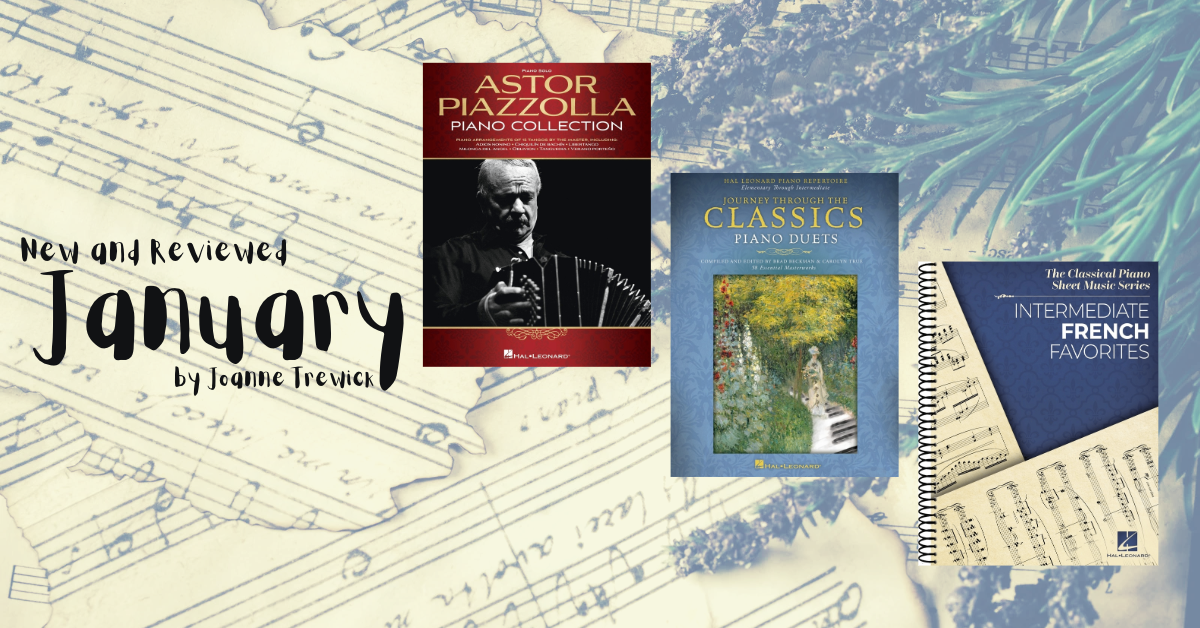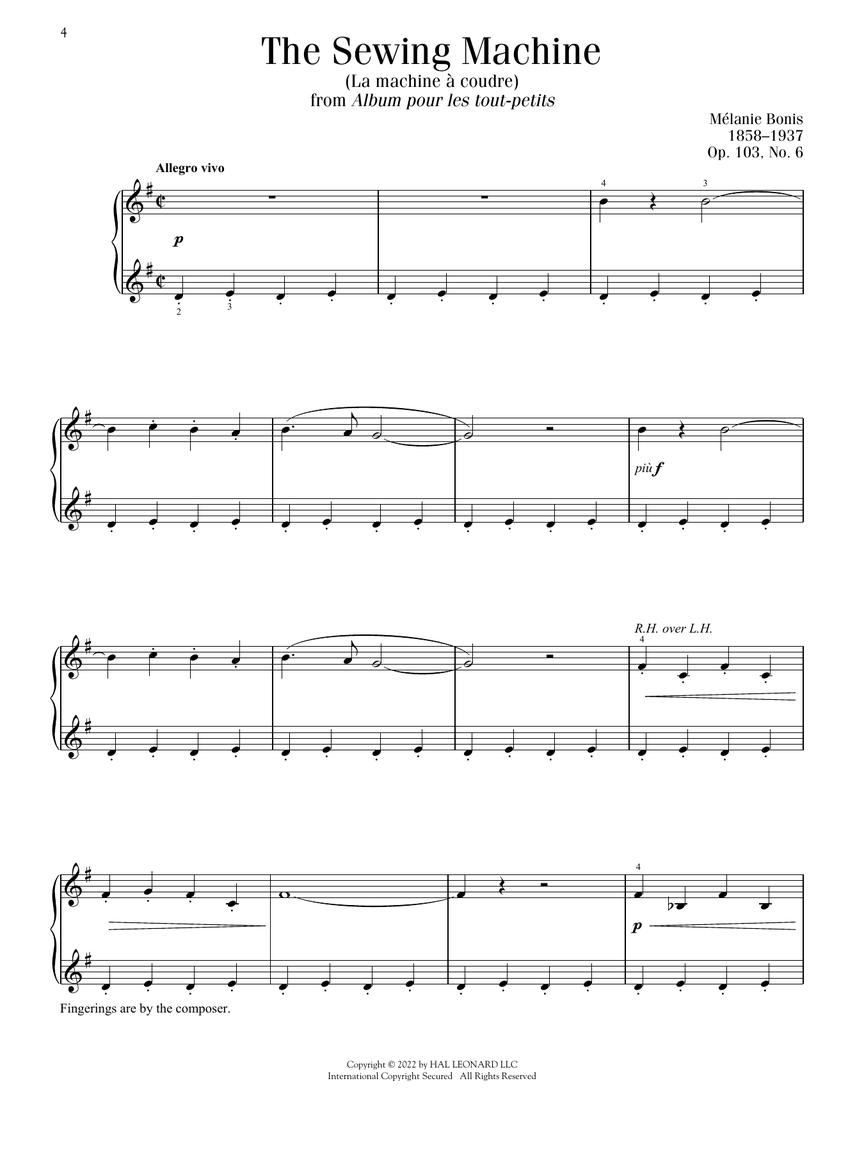
Intermediate French Favourites
The Classical Piano Sheet Music Series
I love coil binding for its ease of use and page turns, I was so also excited to see what was in this collection and what might be included in French “Favourites.”
Immediate delight as I flicked through the pages and saw lots of the staples of my teaching repertoire for intermediate – early advancing students in one collection. Images are uncluttered and typesetting is clear. I particularly like the choices of Debussy pieces that always appeal to young students and that all of Satie’s Gnossiennes and Gymnopedes are included.
The book does contain a couple of pieces suitable for students from prelim to Grade 3, but I would tend to use them for sight reading practice (or younger siblings) and suggest the book for students from around Grade 4 level. From there they can keep it for many years and play a good variety of pieces from Debussy, Satie, Farrenc, Faure and Ravel as they advance. I would also use it for older students who may not have previous exposure to the writing of French composers and their trademark delicate and artful style, this collection would provide a great springboard for exploring this genre of playing before moving onto bigger works.


Astor Piazzola Piano Collection
This book is for those with a love of the bold tango style and the hand strength to match. There are some that were familiar to me (such as Street Tango, and Libertango) along with pieces that I didn’t recognise. With pieces accessible for students in the Grade 5-8 bracket, I would place this collection as most suitable for students who may have loved earlier grade tango or latin music by Barbara Arens, Timothy Brown, Christopher Norton or even Albeniz, and want to expand their experience with more complex rhythms.
Classic Piano Duets
I am already a fan of the Journey through the Classics series which this book is a part of.
This book has the same clear typesetting and non-glare paper, plus lay flat binding, so is appealing straight up. Term 4 is all about duets in our studio and I like to assign duets that are at a quick study level (almost sight readable and can be perfected in a couple of weeks). This would mean my kids who had completed Grade 1/2 would be using the first collection in the book and my kids who had completed Grade 5/6 would be using the hardest of the four collections. But actually there isn’t much in here above a solid grade 3 level so if you have a lot of young students who love duets you won’t want to be without this collection in your studio.
Octaves are needed in the secondo parts, especially in the Intermediate collection but there are plenty of options for smaller hands. There is a sprinkling of baroque pieces but it is mostly Classical and Romantic eras that are represented.


Joanne Trewick
Joanne is a music educator in a Far North Queensland farming community. She is passionate about her family, the great outdoors (since she lives in paradise), and sharing the gift of music with children.
Her home studio and work as a multi- instrumental teacher in state and catholic schools sees her with plenty of opportunity to follow her studio mantra- creating life long musicians.
“Working with kids is a privilege and so much fun – not a day goes by that my students don’t teach me something, and light up my soul !”









